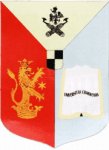|
||||||||||||||
|
LOCATION:
Hosted and Sponsored by:
University of Craiova
Drobeta-Turnu Severin is on the bank of the Danube River bordering Serbia. This place goes way back, with Roman ruins to prove it, but the present town was laid out in the 19th century when its port was built. Its top attractions is the Iron Gates Museum (Muzeul Portilor de Fier) which has an incredible scale model of the old Roman bridge that spanned the Danube to Serbia. The museum is housed in the former Trajan school for girls, dating from 1922. The museum doors were thrown open on the eve of the 1972 unveiling of the mammoth Portile de Fier hydroelectric power station, 10km to the west. The bridge model is based on the real one constructed across the Danube in AD 103 by the Syrian architect Apollodor of Damascus, on the orders of the Roman emperor Trajan. The Trajan Bridge stood just below the site of the present museum, and the ruins (ruinele podului lui Traian) of two of its pillars can still be seen nearby on the museum grounds. In addition to the Roman bridge, the museum has sections on history, ethnography, astrology, popular art, the evolution of man, archaeology and a drab aquarium in the basement displaying various fish species prevalent in the Danube, including the giant Somnul fish.
|
||||||||||||||
|
|
|
|
||||||||||||
| copyright - designed by WSEAS | ||||||||||||||



